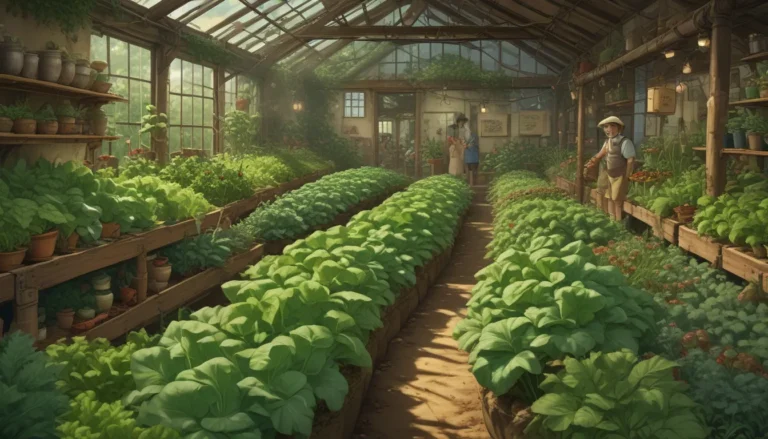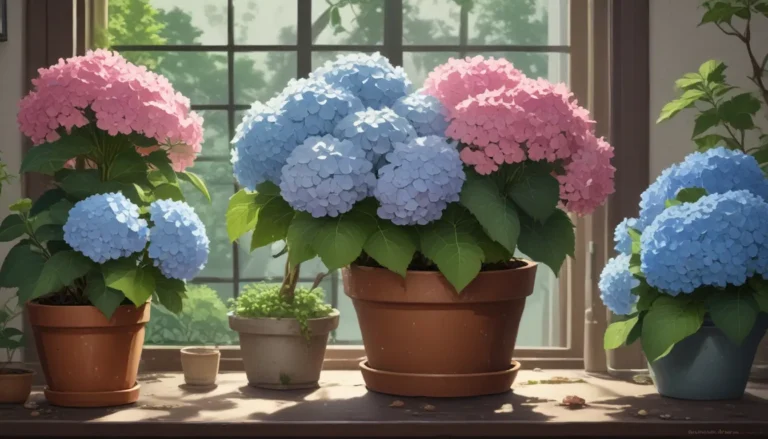A Comprehensive Guide to Understanding Different Types of Peony Flowers

Peonies, scientifically known as Paeonia spp., are a beloved flowering perennial that thrives in USDA Hardiness Zones 3-8. These stunning flowers prefer full sun and bloom in the spring, sometimes extending into early summer. With their big, flouncy blossoms, peonies are a staple in cottage gardens and have inspired countless botanical prints and textiles.
In this detailed guide, we will delve into the various types of peonies available, their growth habits, and unique physical attributes. Whether you’re a seasoned gardener or a beginner looking to add these beauties to your garden, this article will provide you with valuable information to help you make informed decisions.
Exploring the Diversity of Peonies
The Paeonia genus is a vast and diverse group with 33 species and 15 subspecies. For home gardeners, peonies can be classified into three main sections based on their growth habits:
- Herbaceous
- Tree
- Intersectional
Let’s take a closer look at each of these categories to understand their unique characteristics and growing requirements.
Herbaceous Peonies
Herbaceous peonies are soft-stemmed plants that die down to the ground at the end of the growing season, only to emerge again in the following year. These varieties go through a period of dormancy before resuming their growth cycle.
One popular herbaceous cultivar is the P. lactiflora ‘Sarah Bernhardt,’ a favorite among peony enthusiasts for over a century. Herbaceous peonies come in a range of sizes, with heights varying from one to three feet. Examples include the Chinese P. lactiflora and the fern leaf P. tenuifolia, known for its feathery foliage and low profile.
Tree Peonies
Tree peonies, derived mainly from species like P. suffruticosa and P. delavayi, are known for their exceptionally large flowers and woody stems. Unlike herbaceous varieties, tree peonies retain their woody stems throughout winter, adding structural interest to the garden. Tree peonies bloom in a variety of colors and petal arrangements, with some reaching over six feet tall at maturity.
One exceptional tree peony variety is the P. rockii, named after Austrian botanist Joseph Rock, known for its exquisite golden stamens.
Intersectional Hybrids
Intersectional hybrids, also known as “Itoh” peonies, are a cross between tree and herbaceous species. Bred by Japanese breeder Toichi Itoh in the 1940s, these hybrids combine the best traits of both parent plants. Intersectional peonies are prized for their sturdy stems, large blooms, and extended flowering period, lasting up to three weeks.
A popular intersectional variety is the Paeonia ‘Bartzella,’ prized for its vibrant yellow color and prolific blooming habits.
Unraveling the Mystery of Peony Petals
Apart from their growth habits, peonies also display a fascinating array of petal characteristics that add to their allure. Blossoms can have single, double, or semi-double flower structures, with fine distinctions such as anemone, bomb, and Japanese styles.
- Anemone Peonies: Identified by their narrow “petaloides” in the center.
- Bomb Peonies: Dense and spherical, with a full center of true petals.
- Japanese Peonies: Characterized by single-petal flowers with staminodes resembling a combination of stamens and petals.
These unique petal configurations distinguish one peony variety from another, making them a favorite among plant enthusiasts and peony societies.
Top Varieties to Consider
Now that we’ve explored the diverse world of peonies, let’s highlight some top varieties that you can consider for your garden:
- Honey Gold: An herbaceous cultivar with semi-double lemon-yellow blossoms.
- Koukamon: A Chinese tree cultivar with fully double burgundy blossoms.
- All That Jazz: An intersectional hybrid with creamy apricot blooms splotched with burgundy.
Whether you prefer herbaceous, tree, or hybrid peonies, there’s a wide range of options to choose from to suit your garden’s aesthetic.
Embrace the Beauty of Peonies in Your Garden
Peonies are not just beautiful flowers; they are a symbol of elegance and grace in the garden. With their bold and bouncy blooms, these perennials add a touch of charm to any landscape. From their early spring glory to their unique petal structures, peonies offer a delightful display that captivates gardeners of all levels.
As you plan your garden, consider adding peonies to the mix and witness their timeless beauty bloom season after season. Share your favorite peony types in the comments below and let us know how you’re enjoying growing these exquisite flowers in your garden.
If you’re looking to explore more spring-flowering plants, check out our suggestions for further reading:
- 9 Reasons Why Your Peony Fails to Bloom
- 25 of the Best Early Spring Blooming Flowers
- How to Plant and Grow Anemone Flowers
Peonies: A timeless classic for your garden that never goes out of style!
*I hope you enjoyed this in-depth guide to understanding different types of peony flowers. Whether you’re a seasoned gardener or a green thumb enthusiast, peonies offer a wealth of options to elevate your garden’s beauty. Embrace the diversity of peonies and watch these timeless blooms bring joy and elegance to your outdoor space. Happy gardening!





